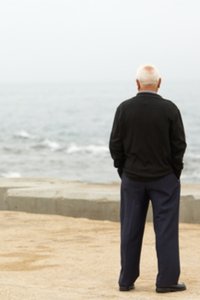Researchers from Australian Catholic University (ACU) will look at links between falls, social isolation, physical activity and environment as part of a new study.
Study lead Associate Professor Gert-Jan Pepping said the research will inform preventative fall programs and strategies to help ageing Australians stay active and independent.
Known as the Study Toward Opportunities to Prevent Falls (STOP Falls), it will involve over 400 people over the age of 65 nationally.
Associate Professor Pepping and his team are currently recruiting people over 65 who can walk independently and have not experienced cognitive or neurological decline in the past two years for the 12-month STOP Falls study. If you are interested in participating, email: gert-jan.pepping@acu.edu.au
A/Prof Pepping said the team want to better understand falls risk factors, how and where they are happening as well as mobility issues causing falls to help ageing people cope with the diverse environment we age in.
Research shows people who live alone or have fewer social contacts are more likely to have falls than their socially connected peers. It is estimated that one in three Australians over the age of 65 will experience a fall every year. Around one in 10 falls lead to serious injuries, such as hip fractures, that require lengthy hospital care and can have long-term effects on quality of life.
“Poor balance and impaired gait have been found to be two of the most significant falls risks in ageing individuals,” Associate Professor Pepping said.
“They can happen because gradual changes to our bodies make walking difficult, or they can be caused by hazards, but falls are not inevitable as we age. Staying mobile and physically active can reduce the incidence of falls and fall-related injuries.”
Associate Professor Pepping said continued exposure to physical challenges are needed to age healthily.
“We need to think of ageing as a performance, just like we do with athletes, and this means we need to keep exposing ourselves to certain challenges and not see physical activity or exercise as a risk but as a way to be well and stay mobile,” he said.
“People need to be exposed to challenging environments to become more robust and protected against falling. This will prevent falls and if we do fall, we are not hurt as badly. If we only find ourselves in a shopping mall with nice flat surfaces, we are at greater risk of falling when we end up in a street with cobblestones.”
The study will be the first to track the environment where falls are happening using an online falls diary. Participants will be surveyed every three months over a year and have access to a QR code to record falls.
“We want to know a little bit more about the environment that they have fallen in, because that’s currently not being tracked at all,” he said. “When someone experiences a fall, they will scan the QR-code and be asked a series of questions such as where they had the fall and what they were doing at the time.”
The study’s falls prediction model will include measures of social interaction, physical activity, quality of life and fear of falling, while also considering the influence of the participants’ age, gender, geographical location, level of support, self-reported walking speed and comorbidities.










